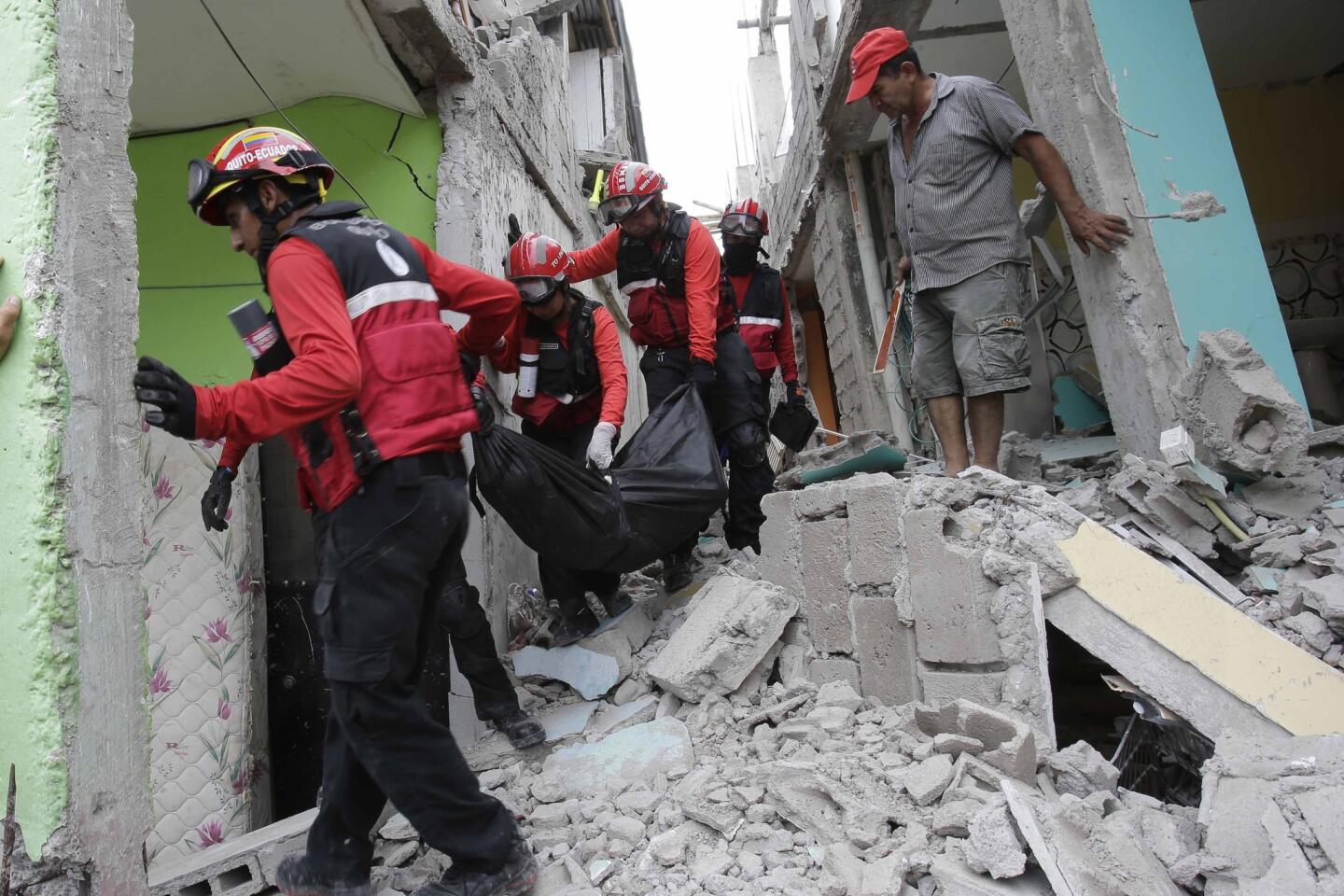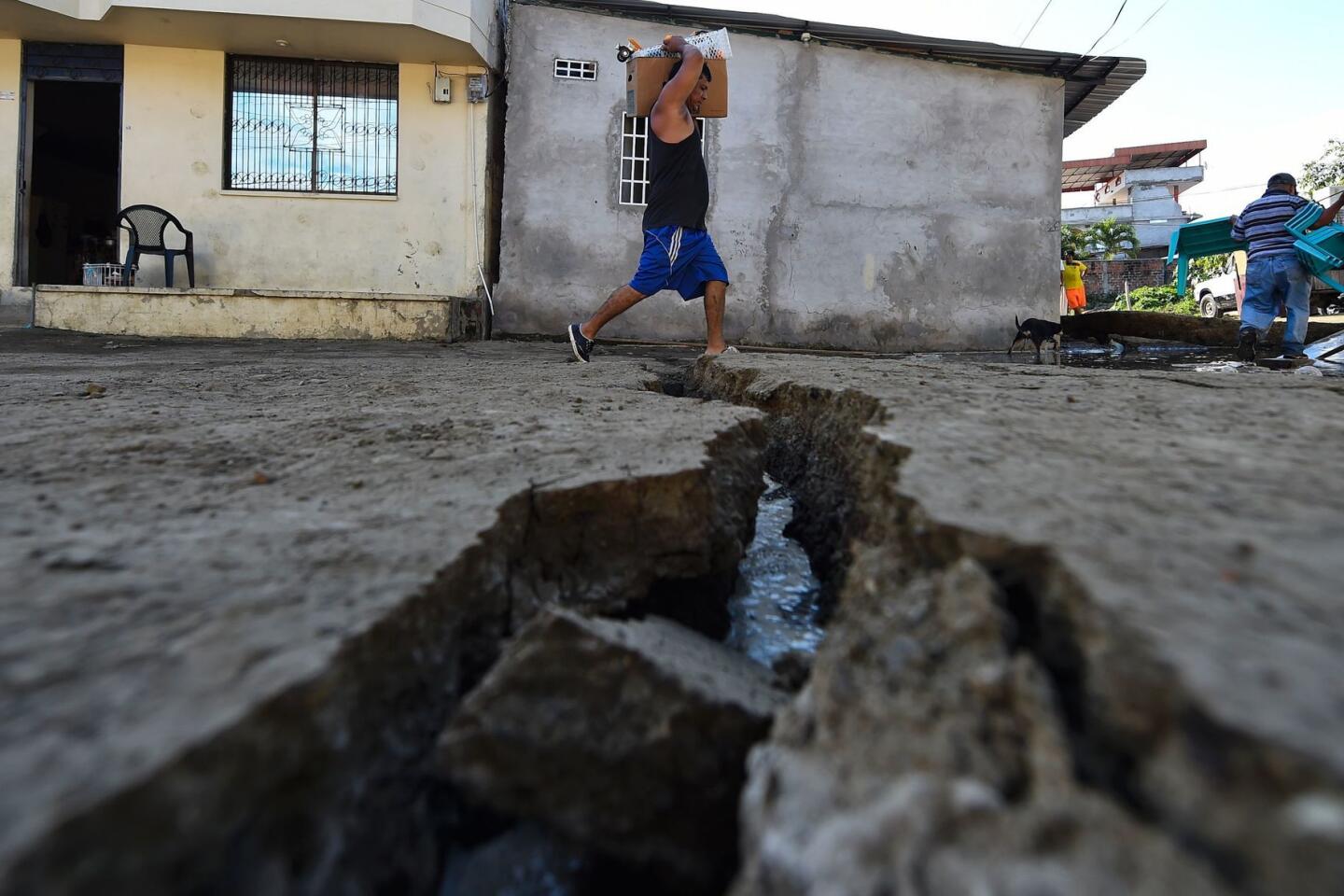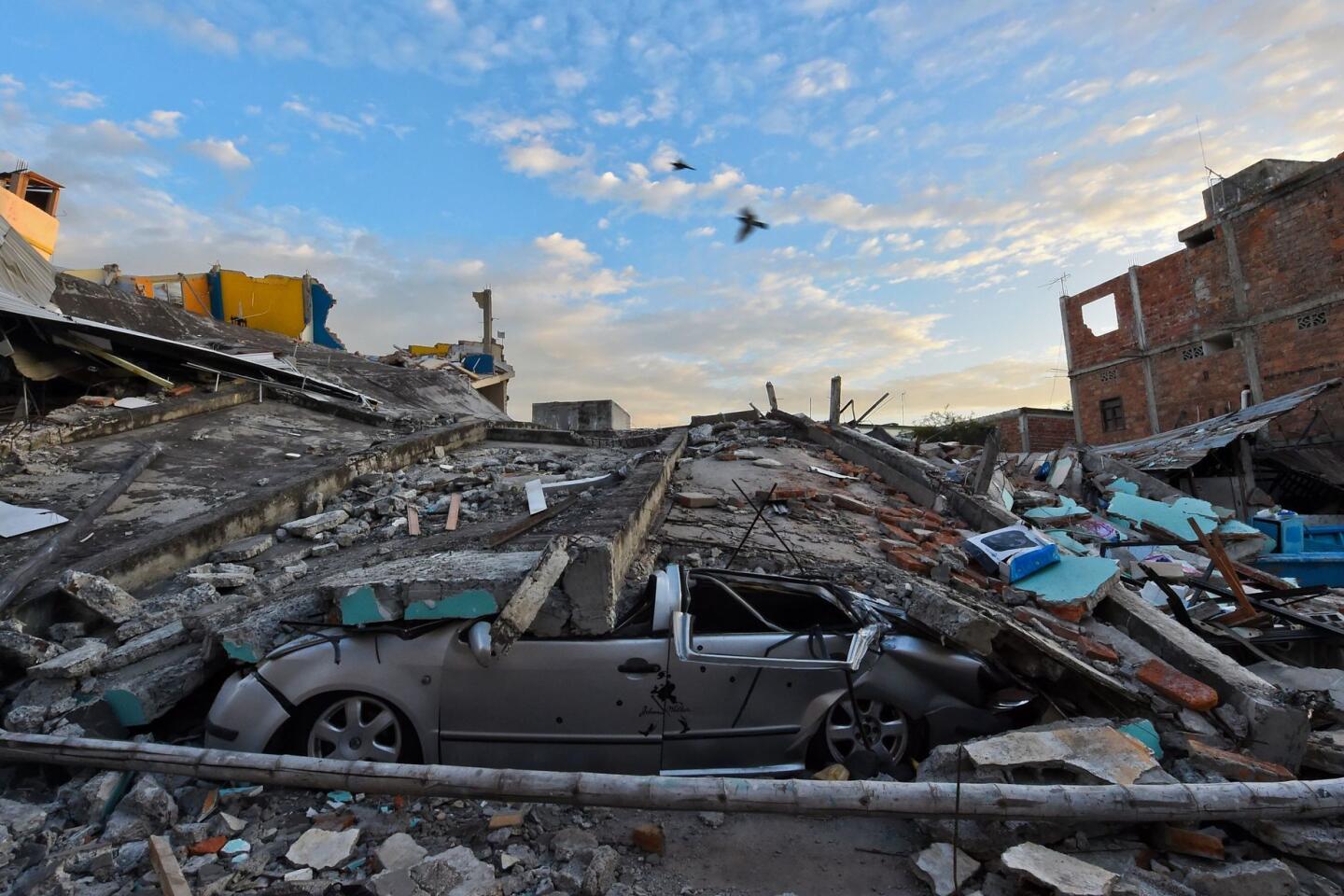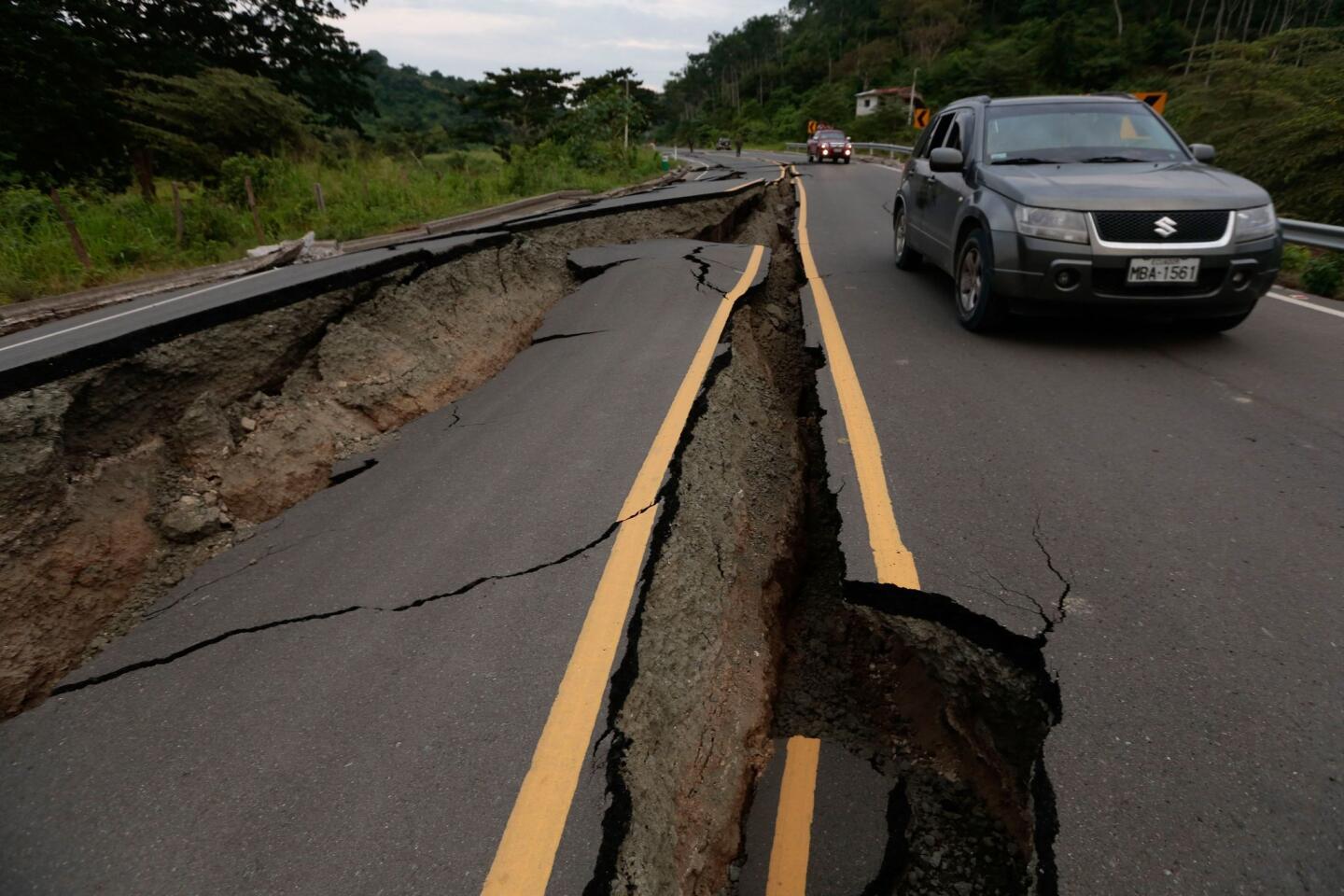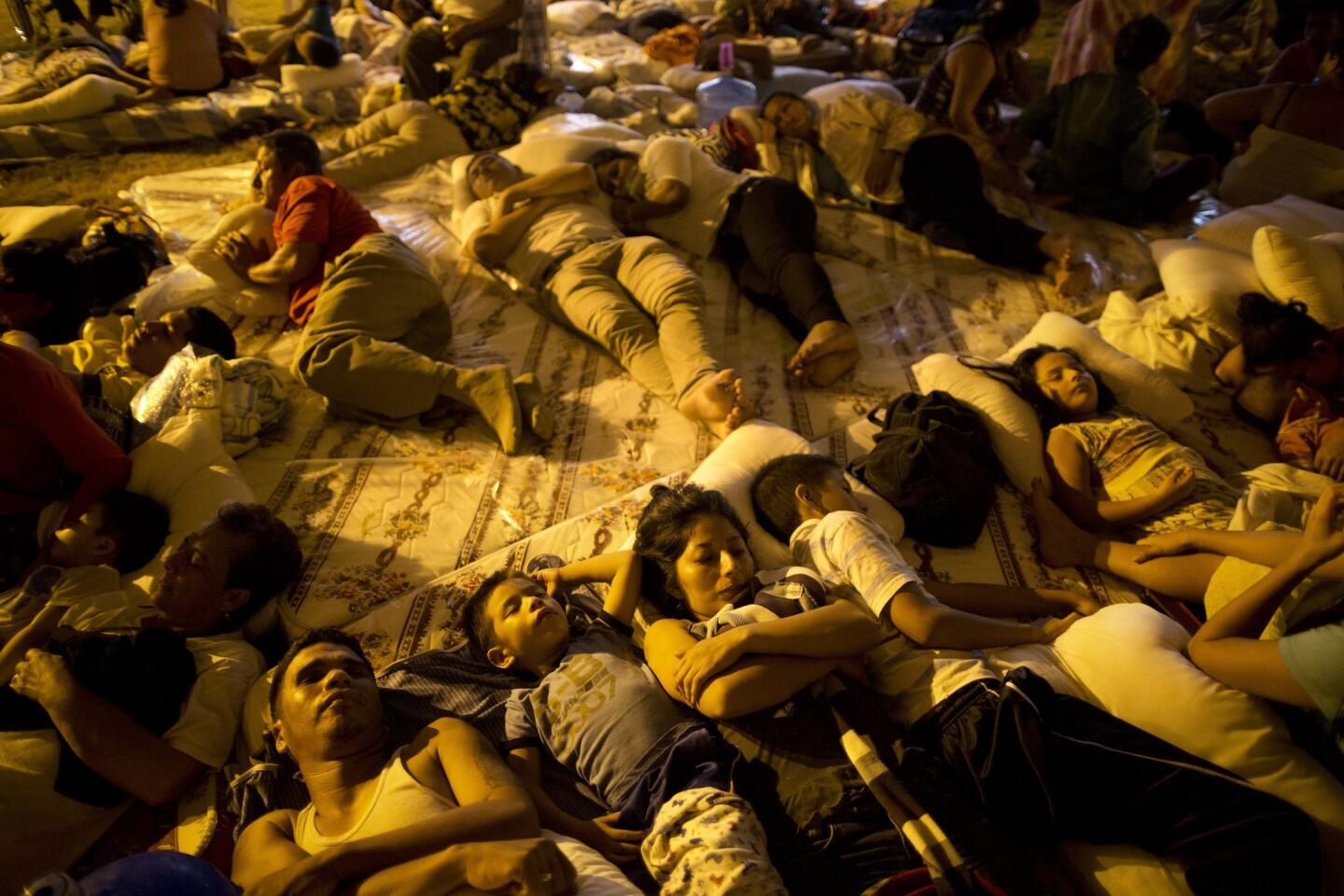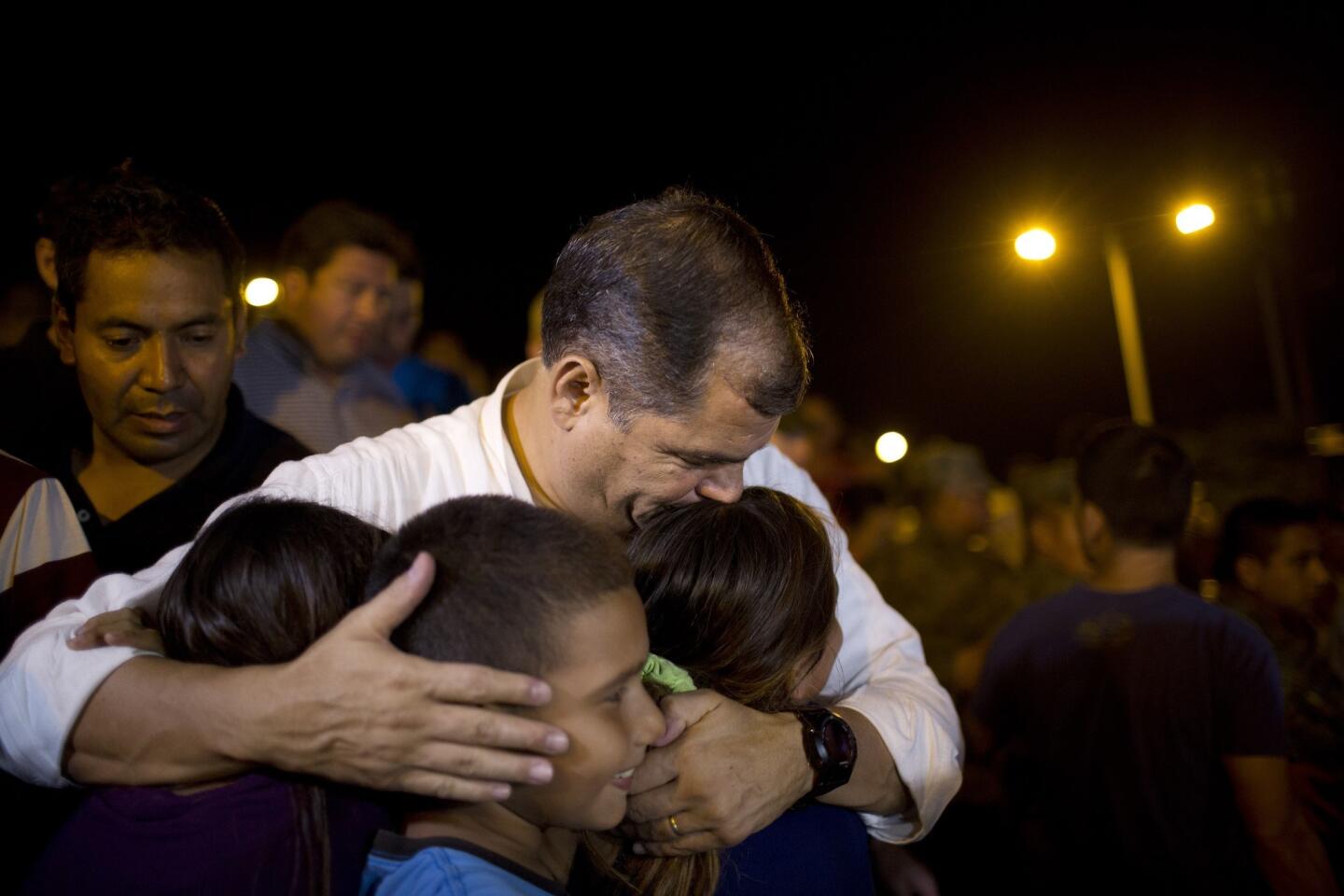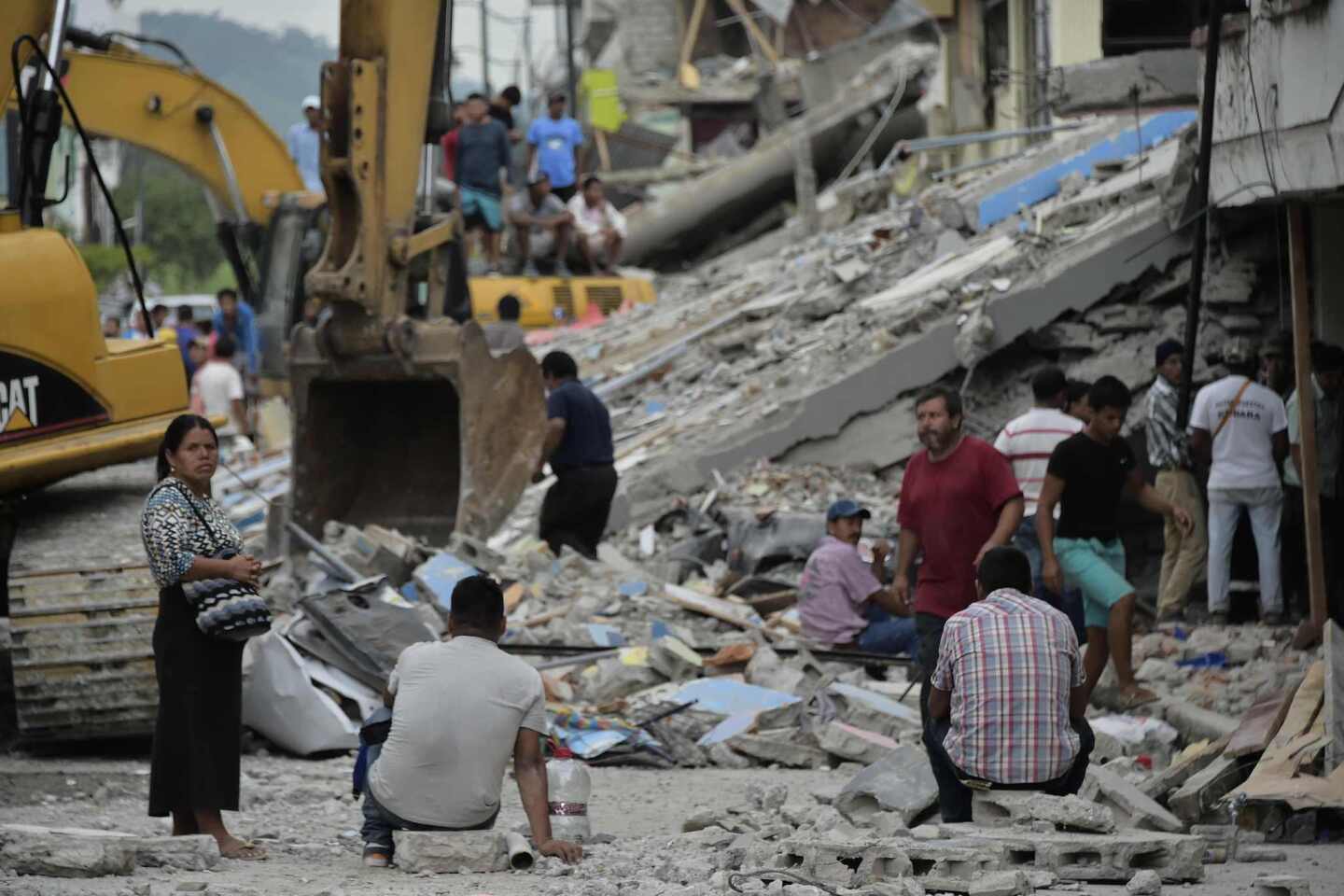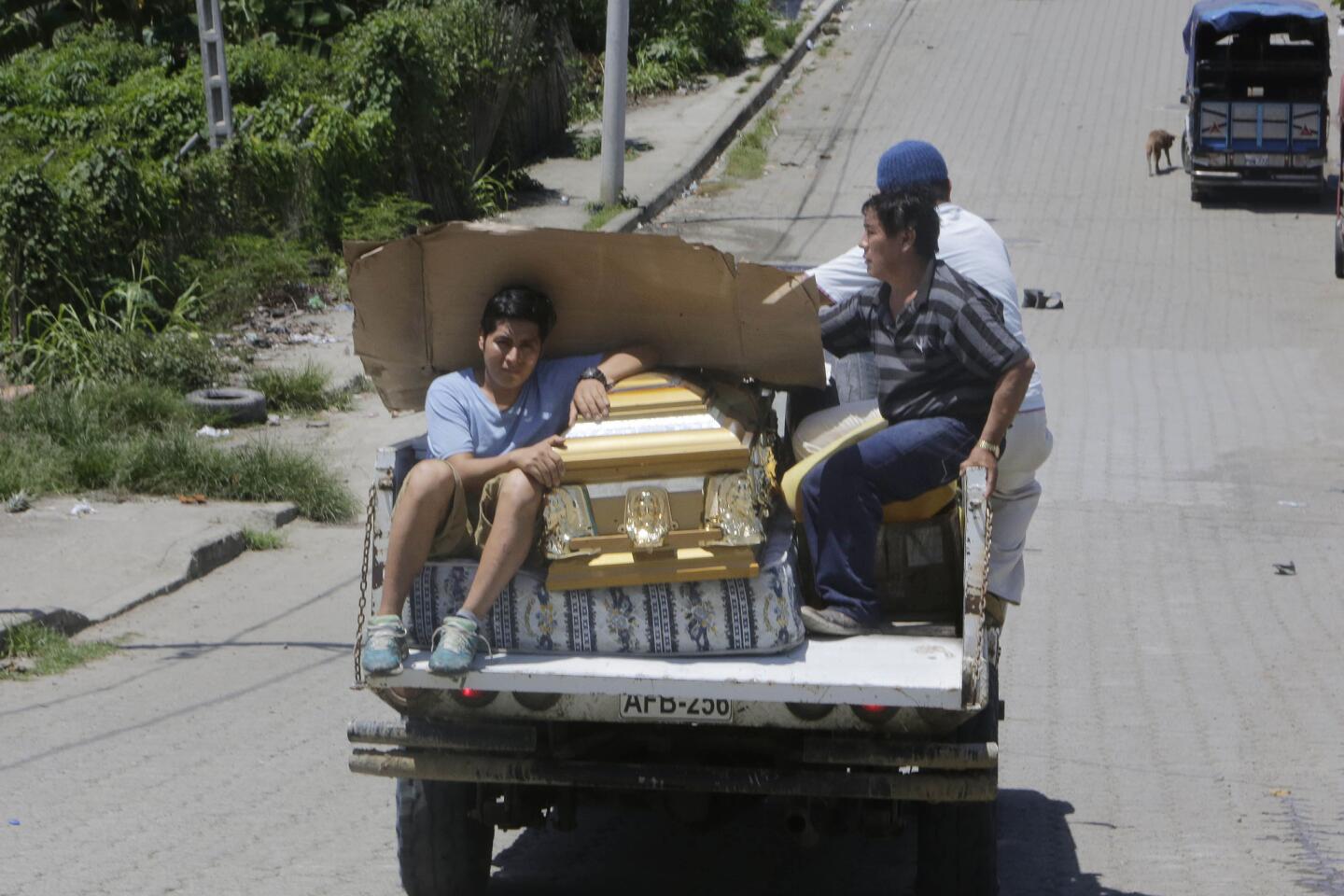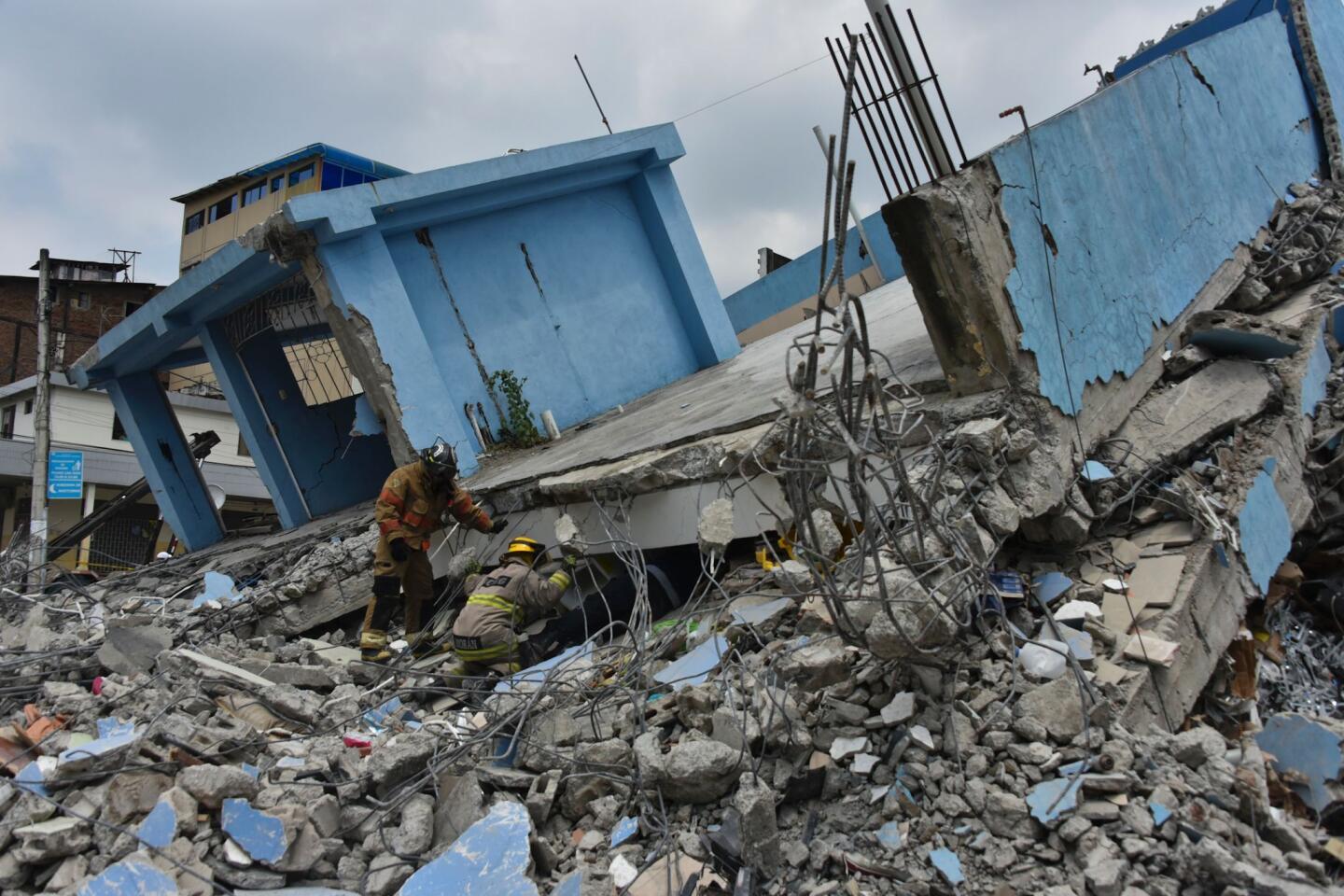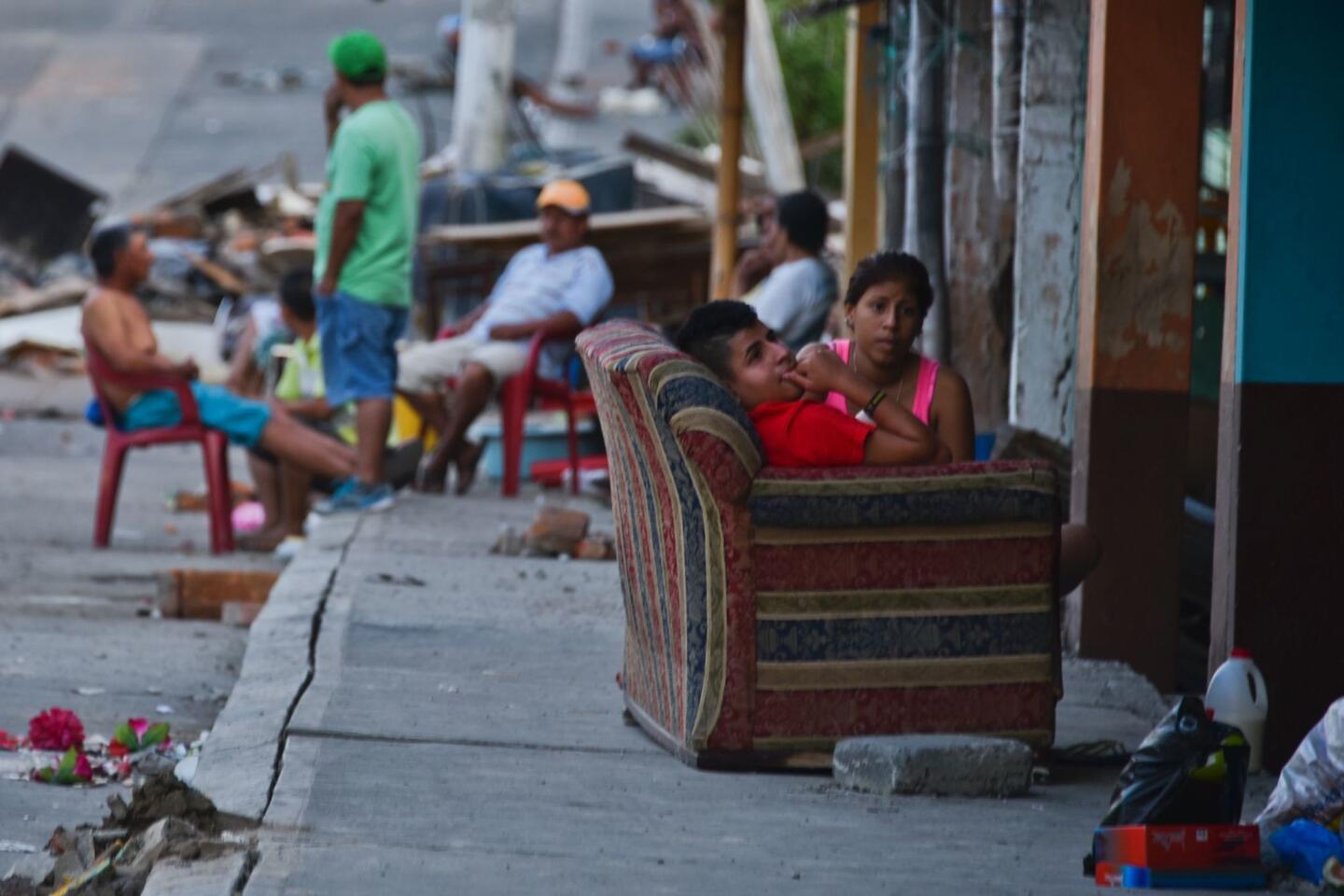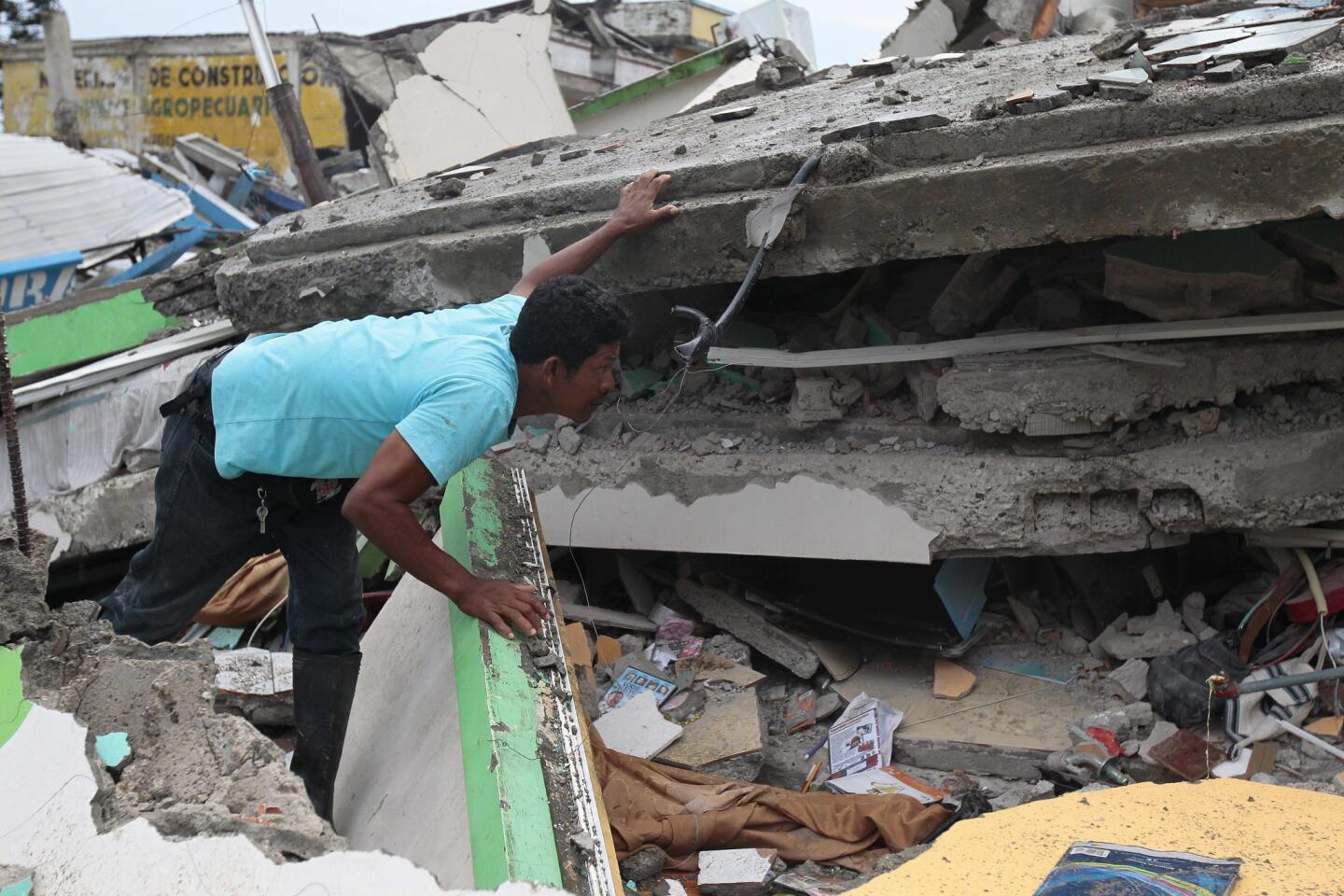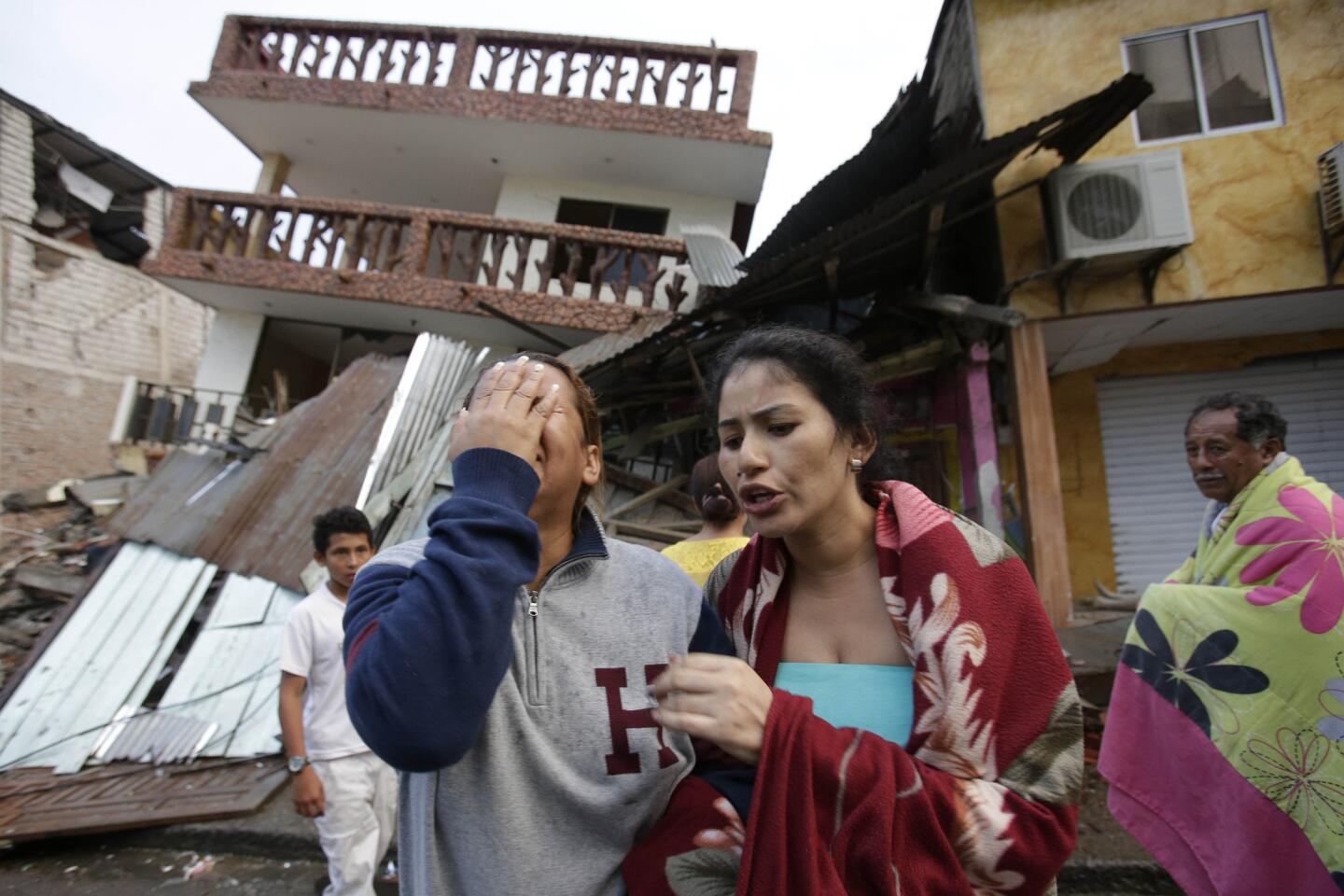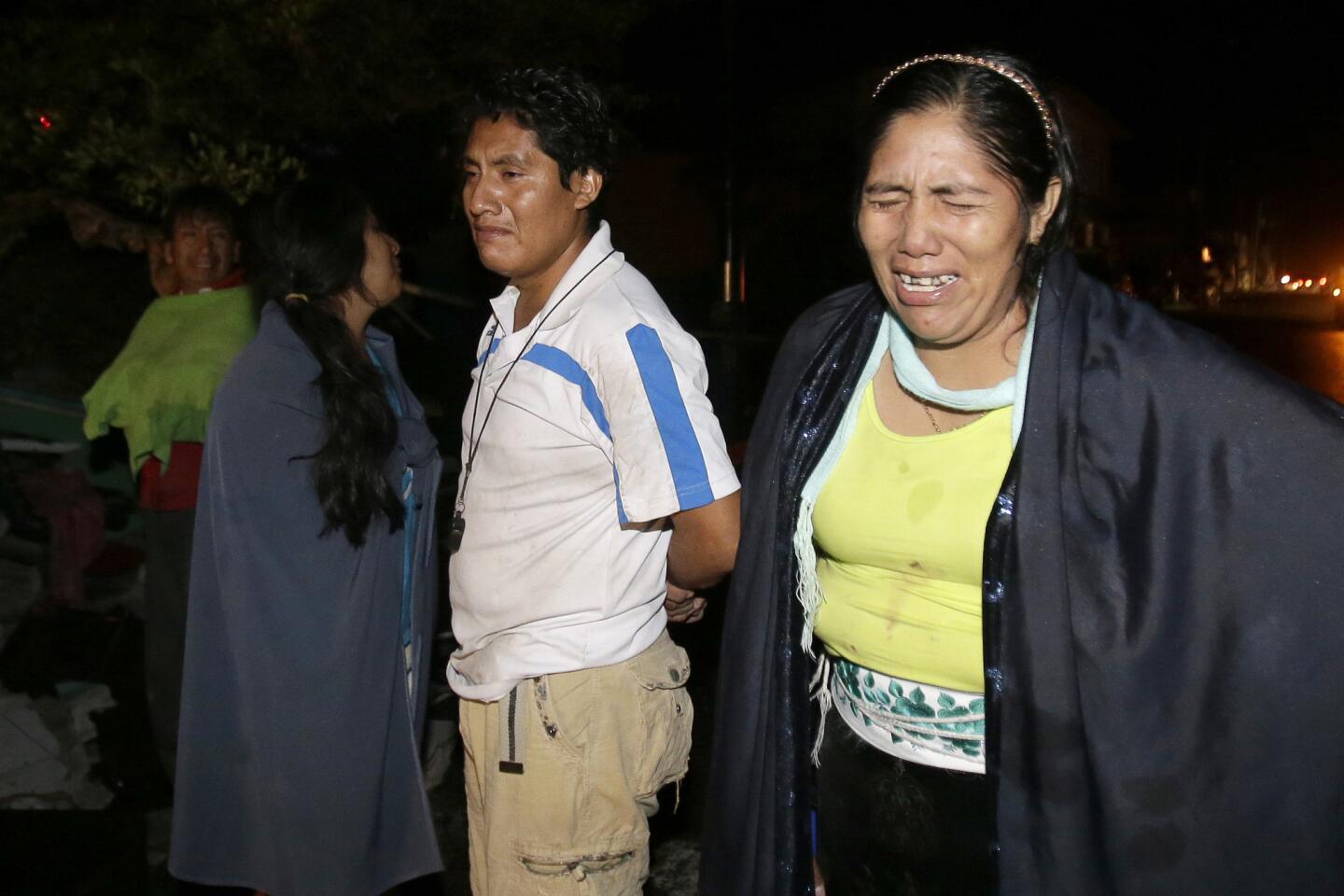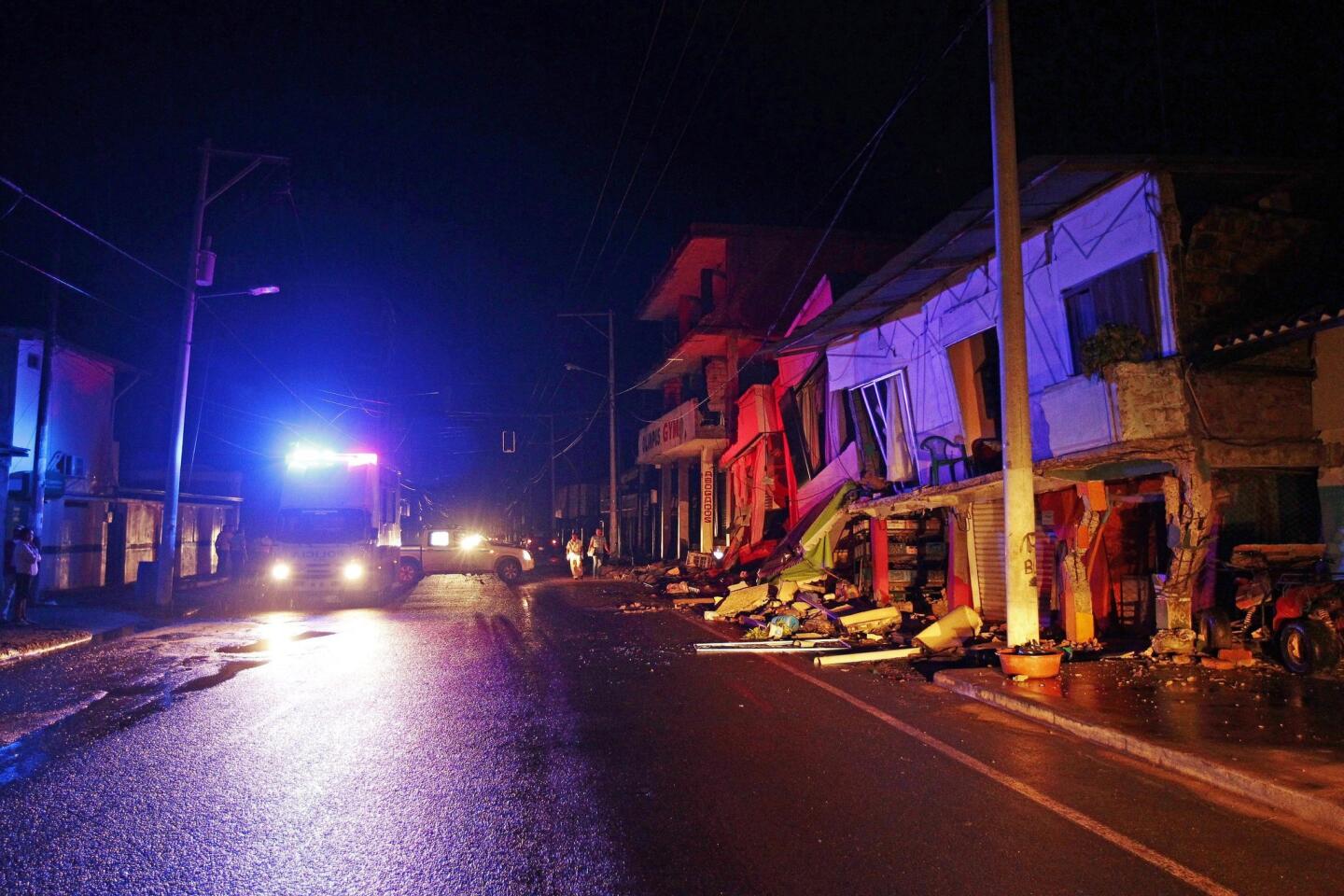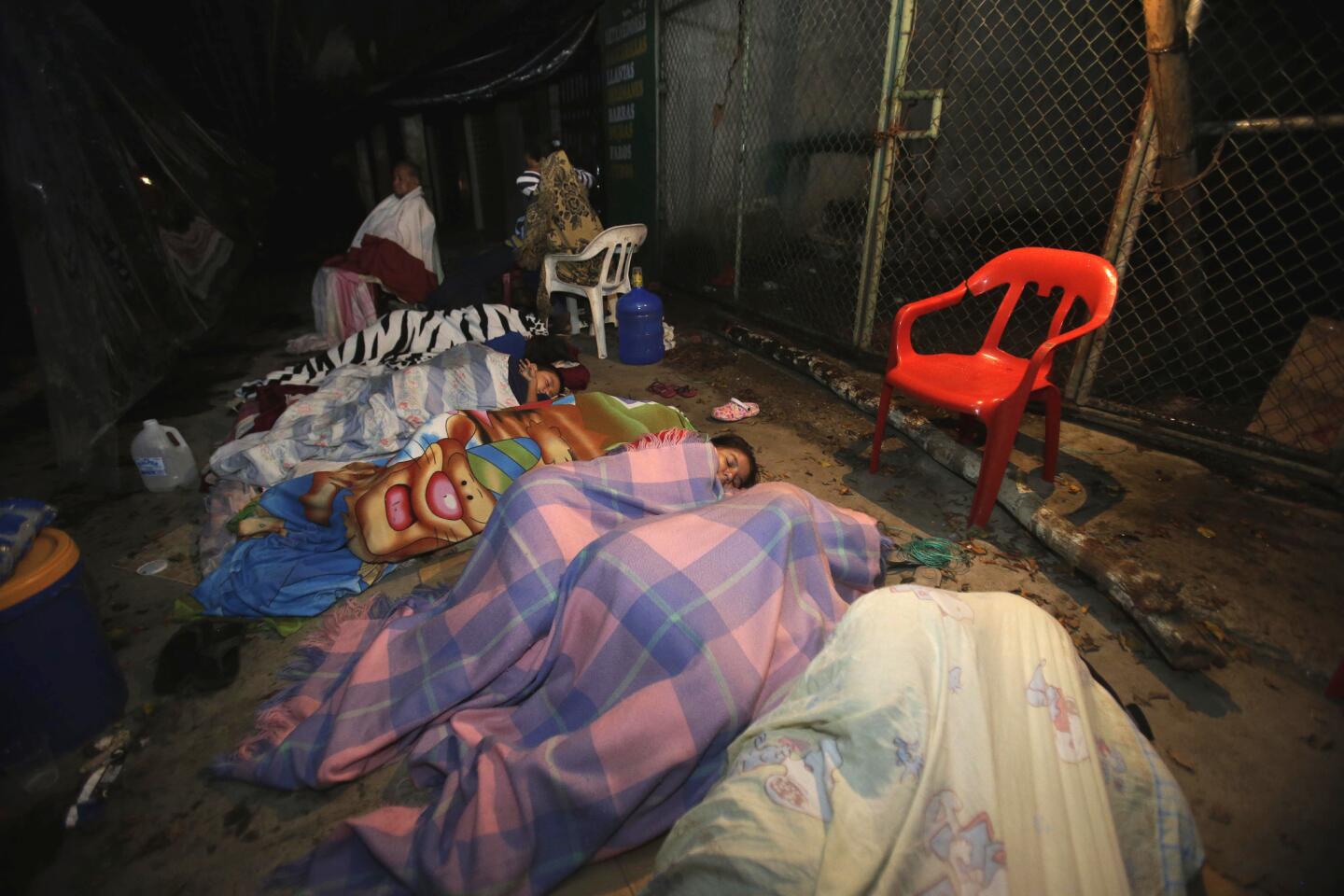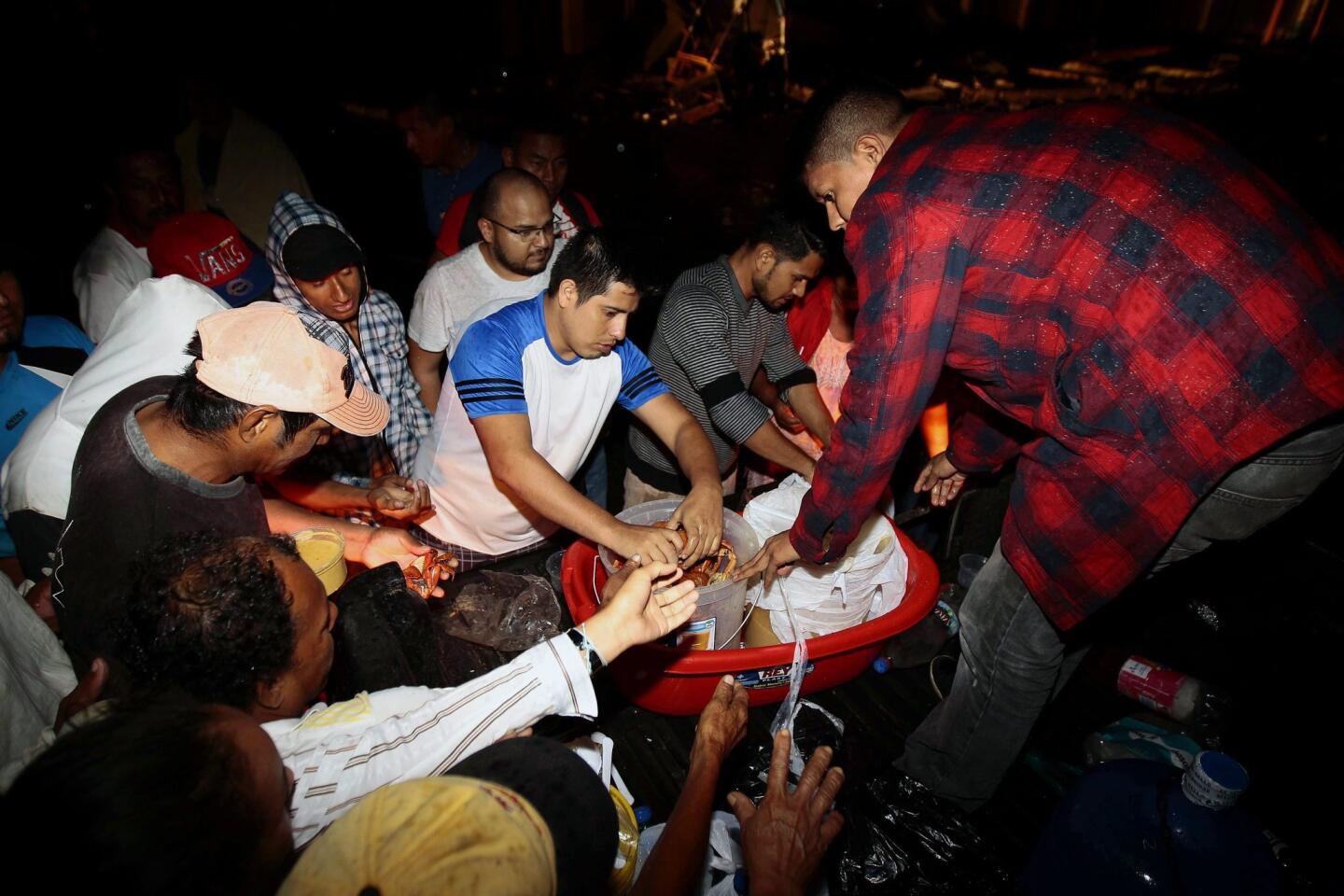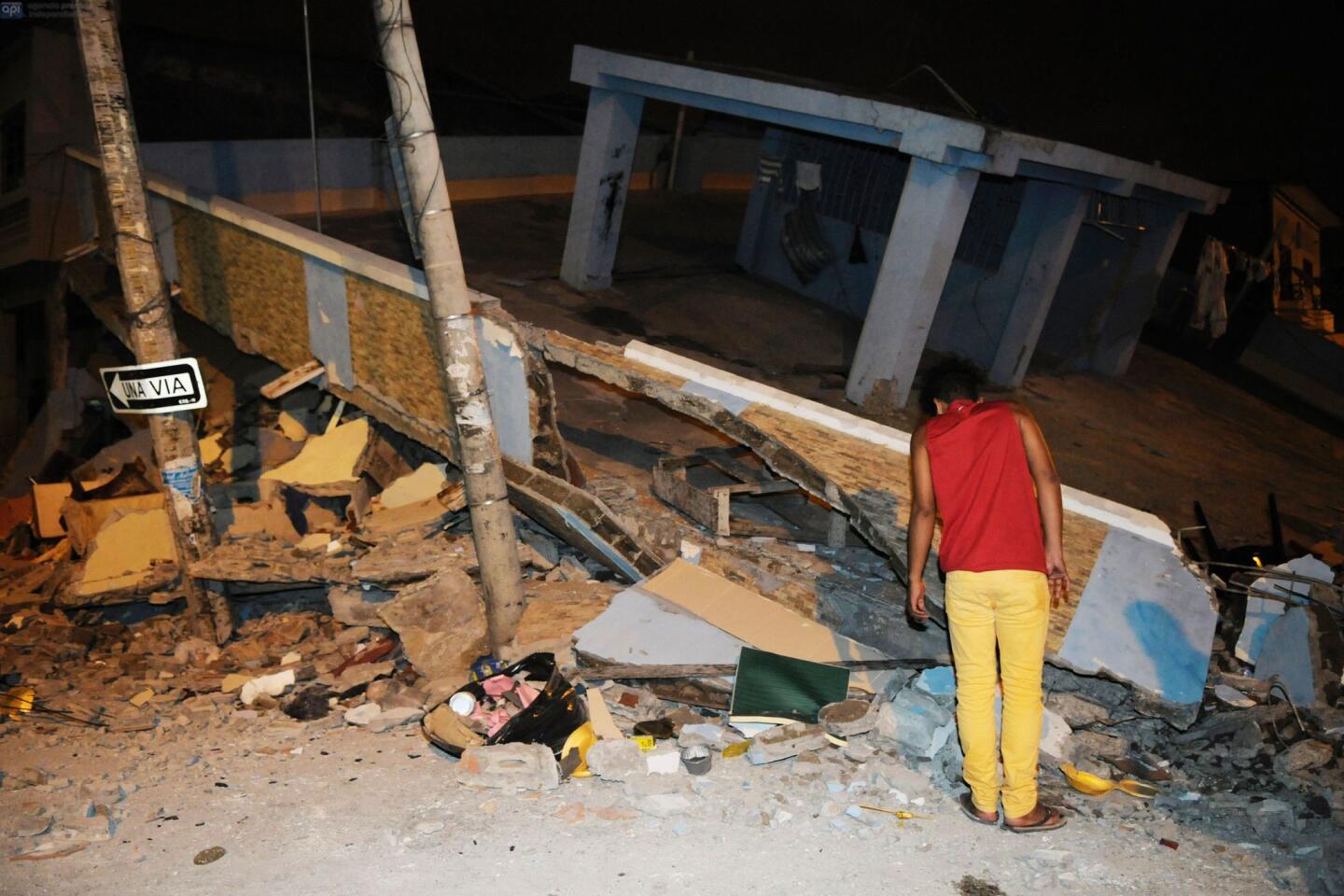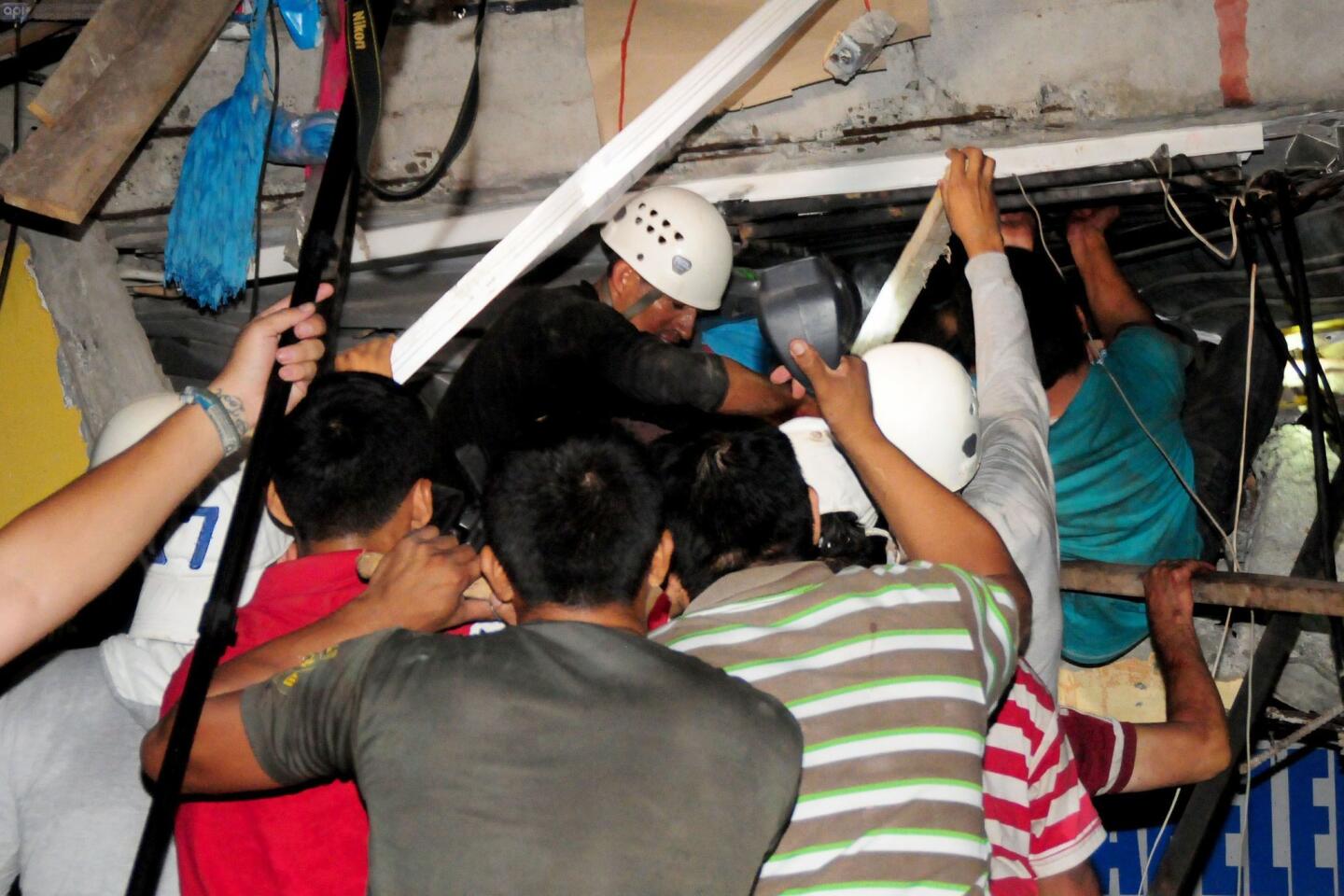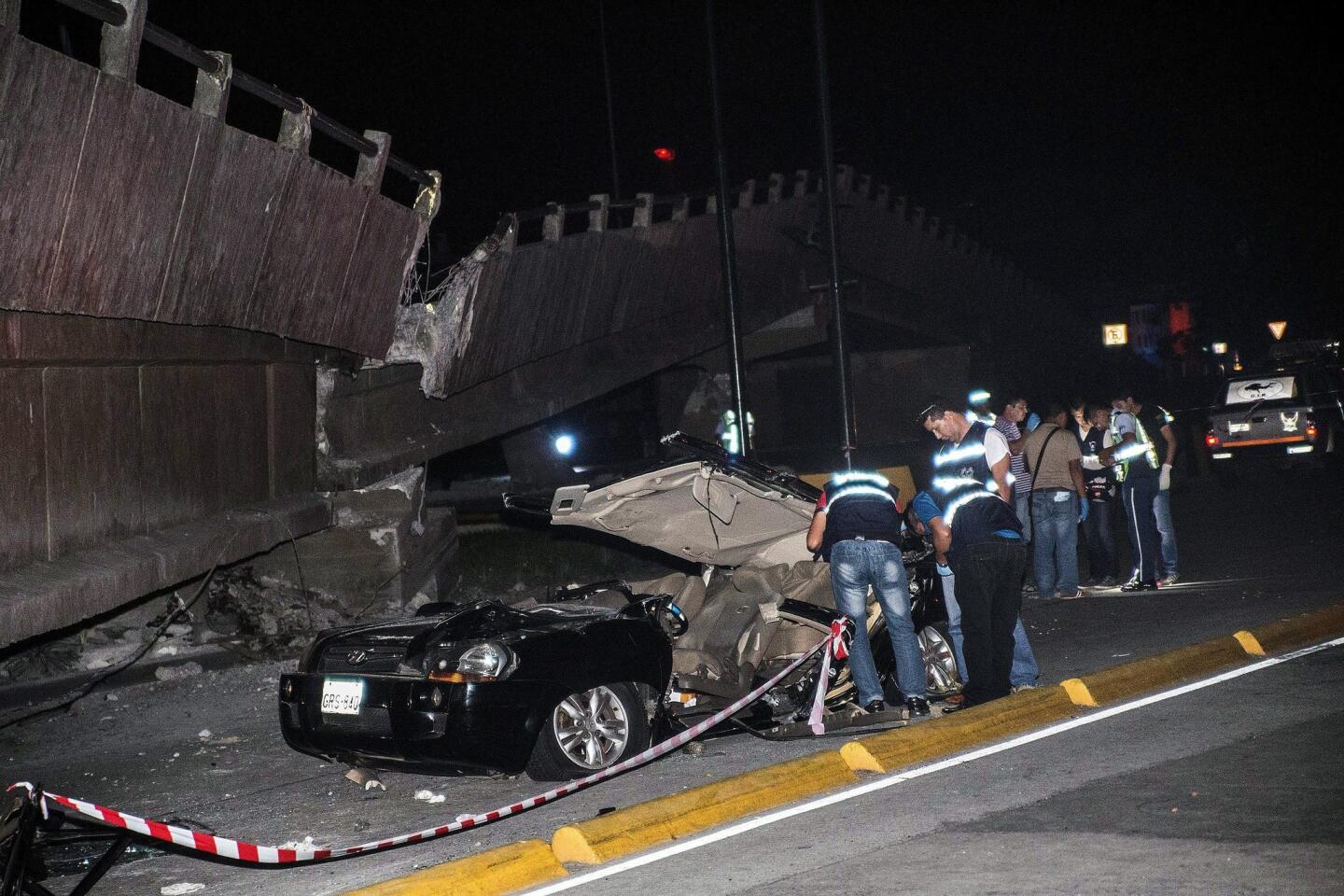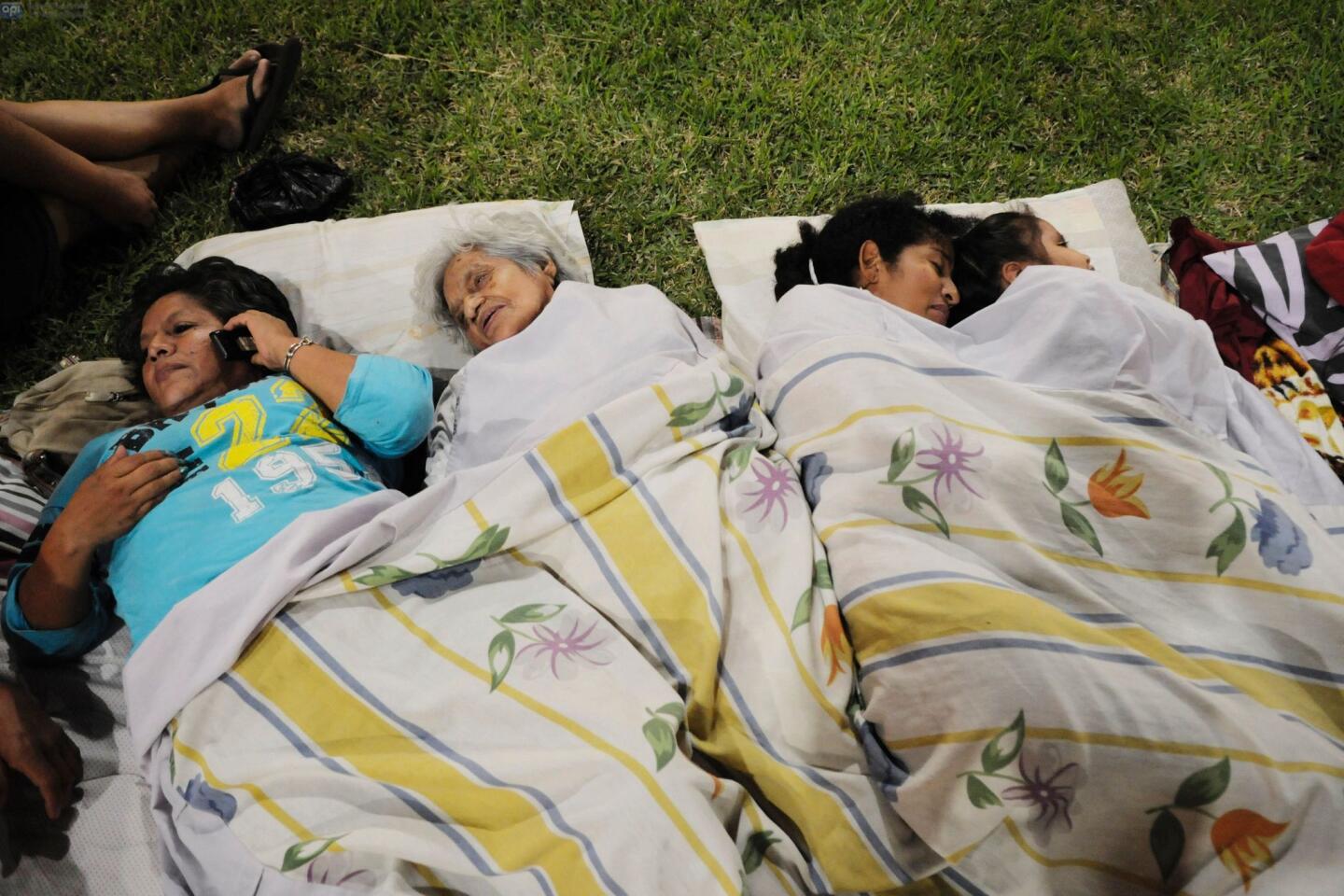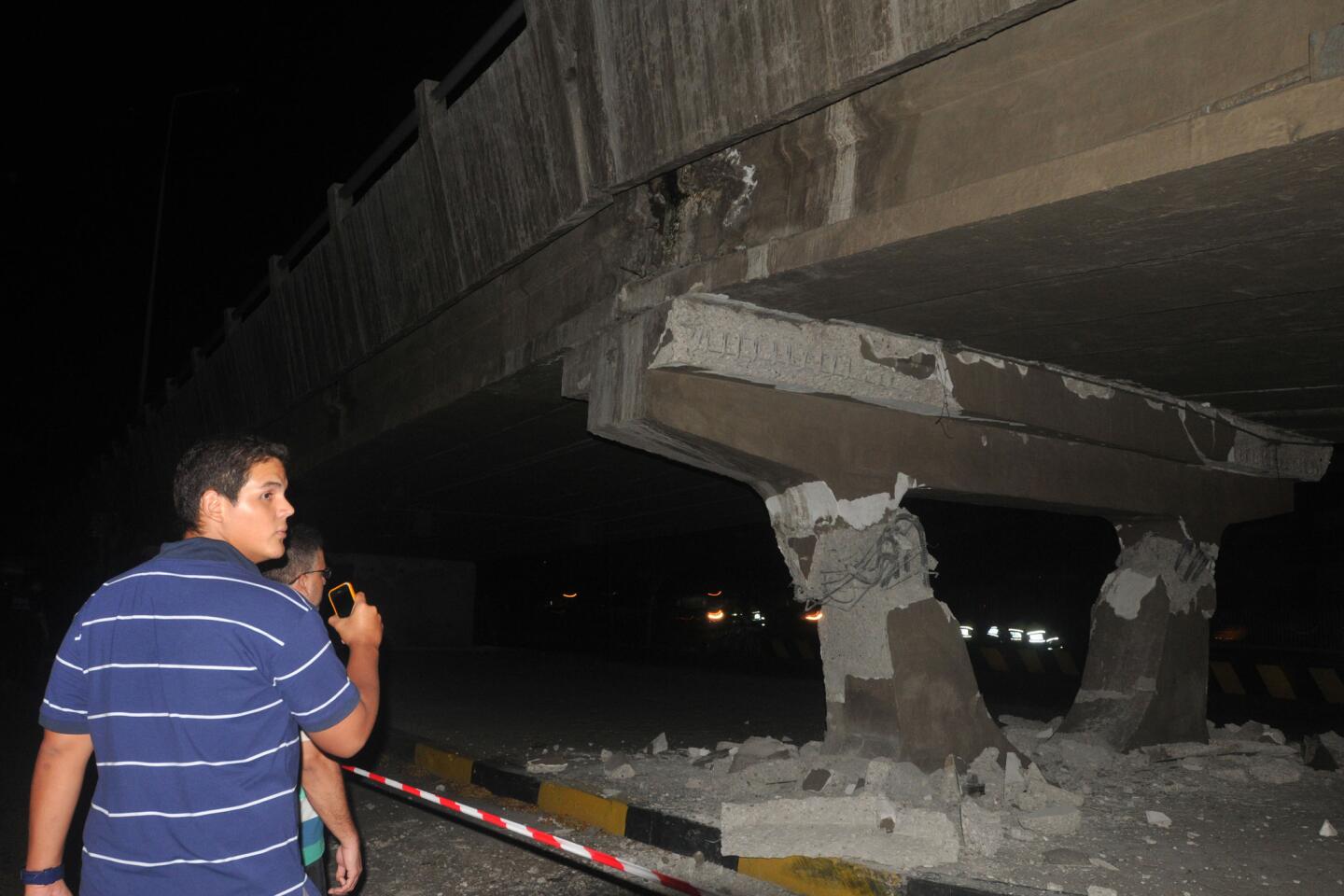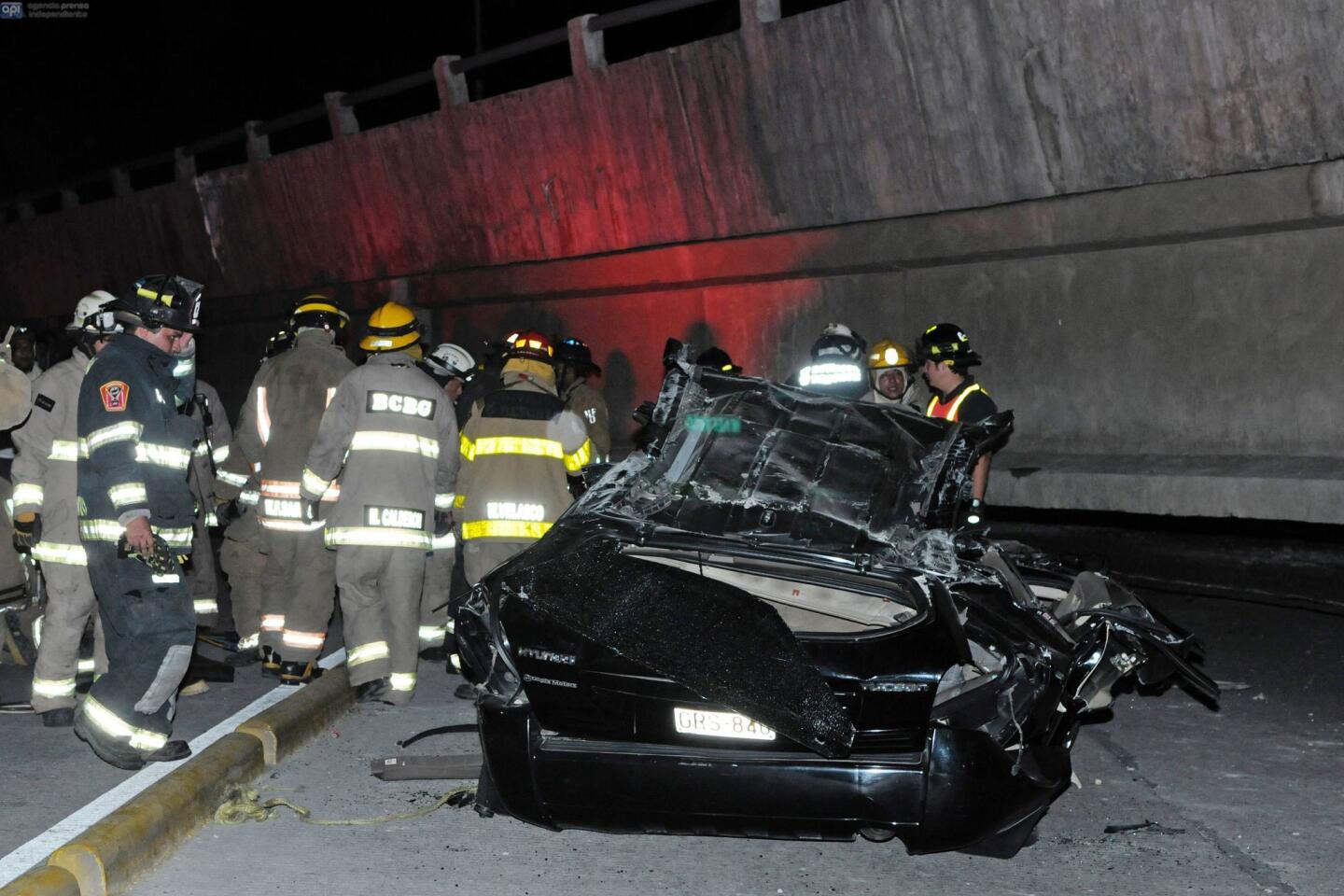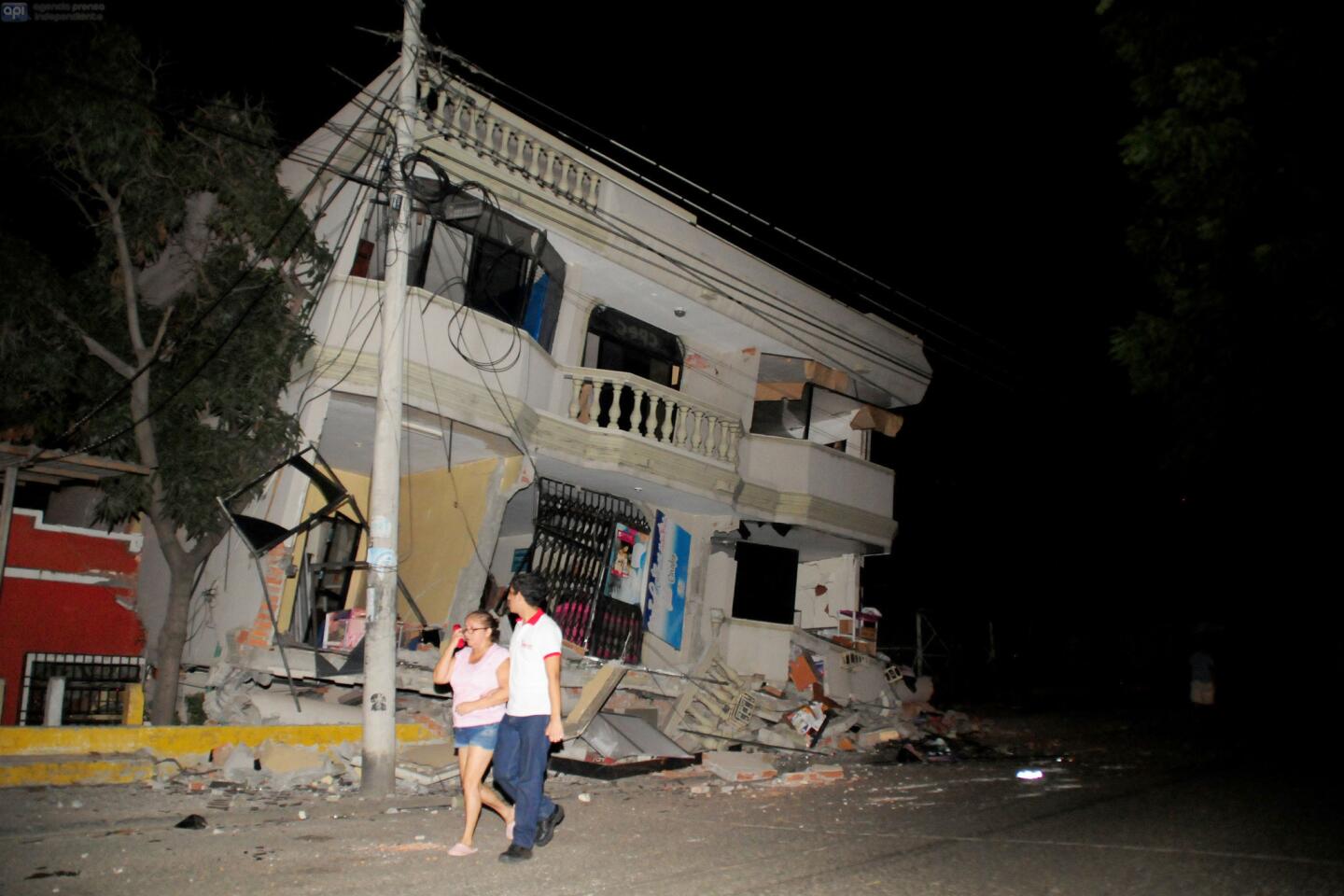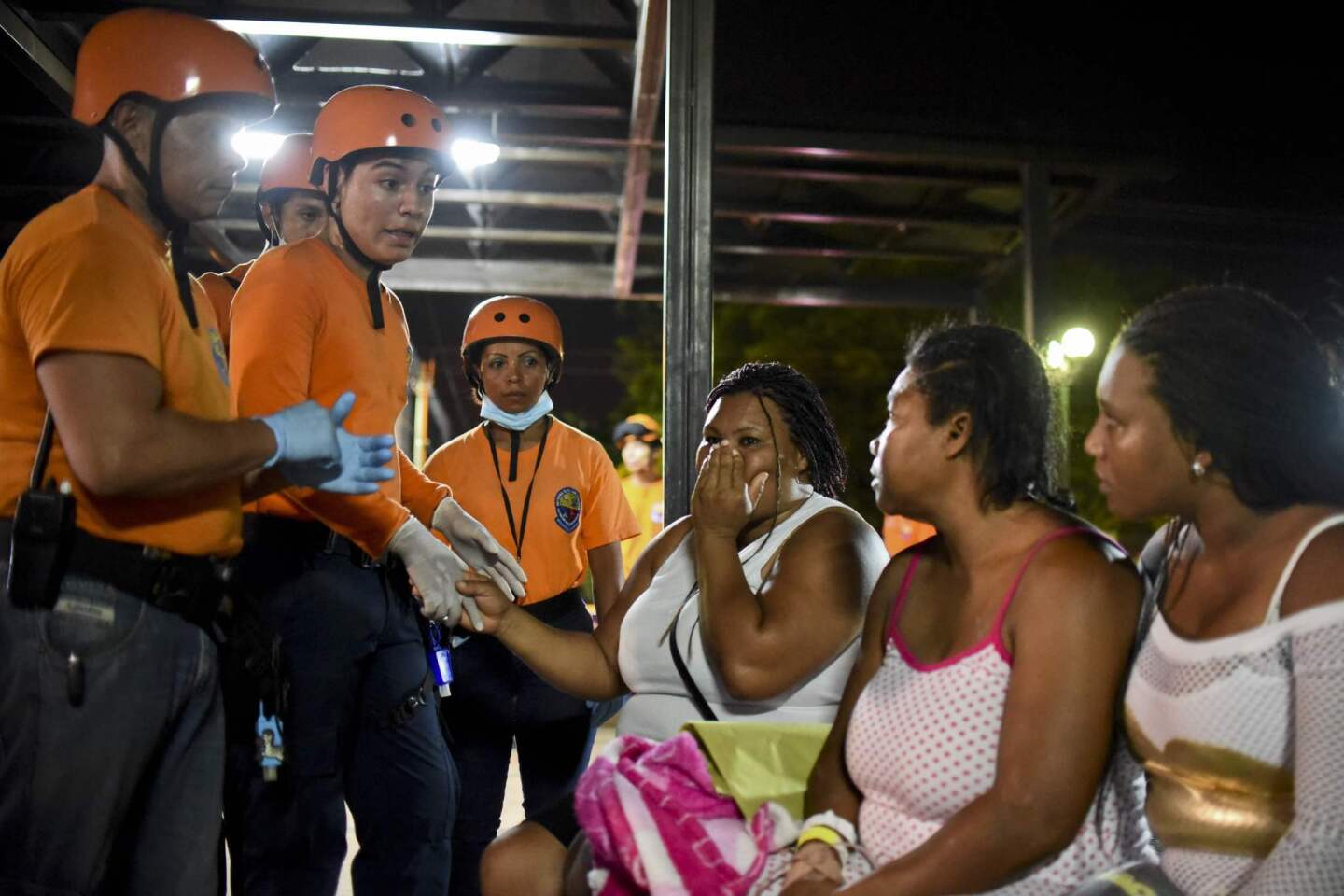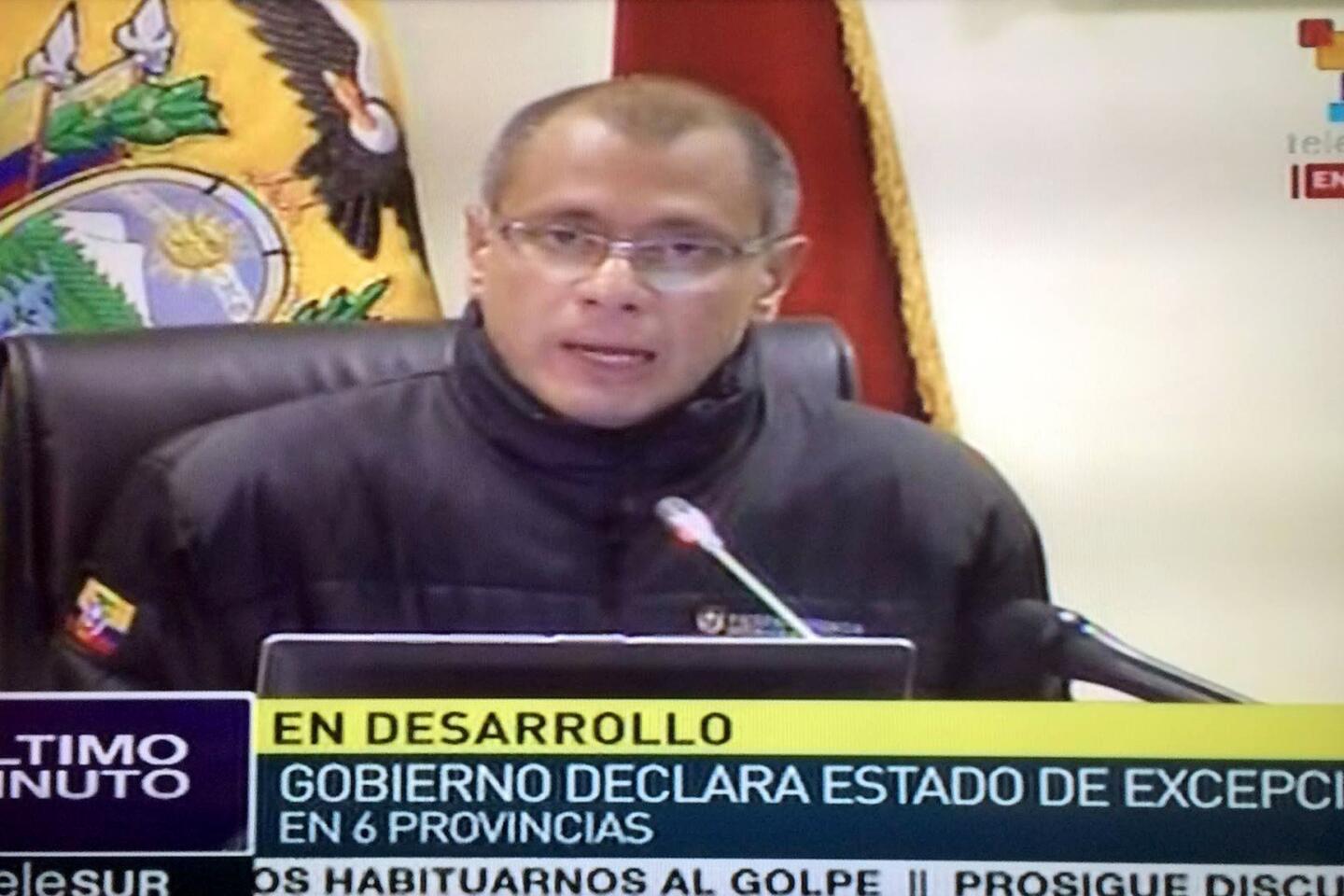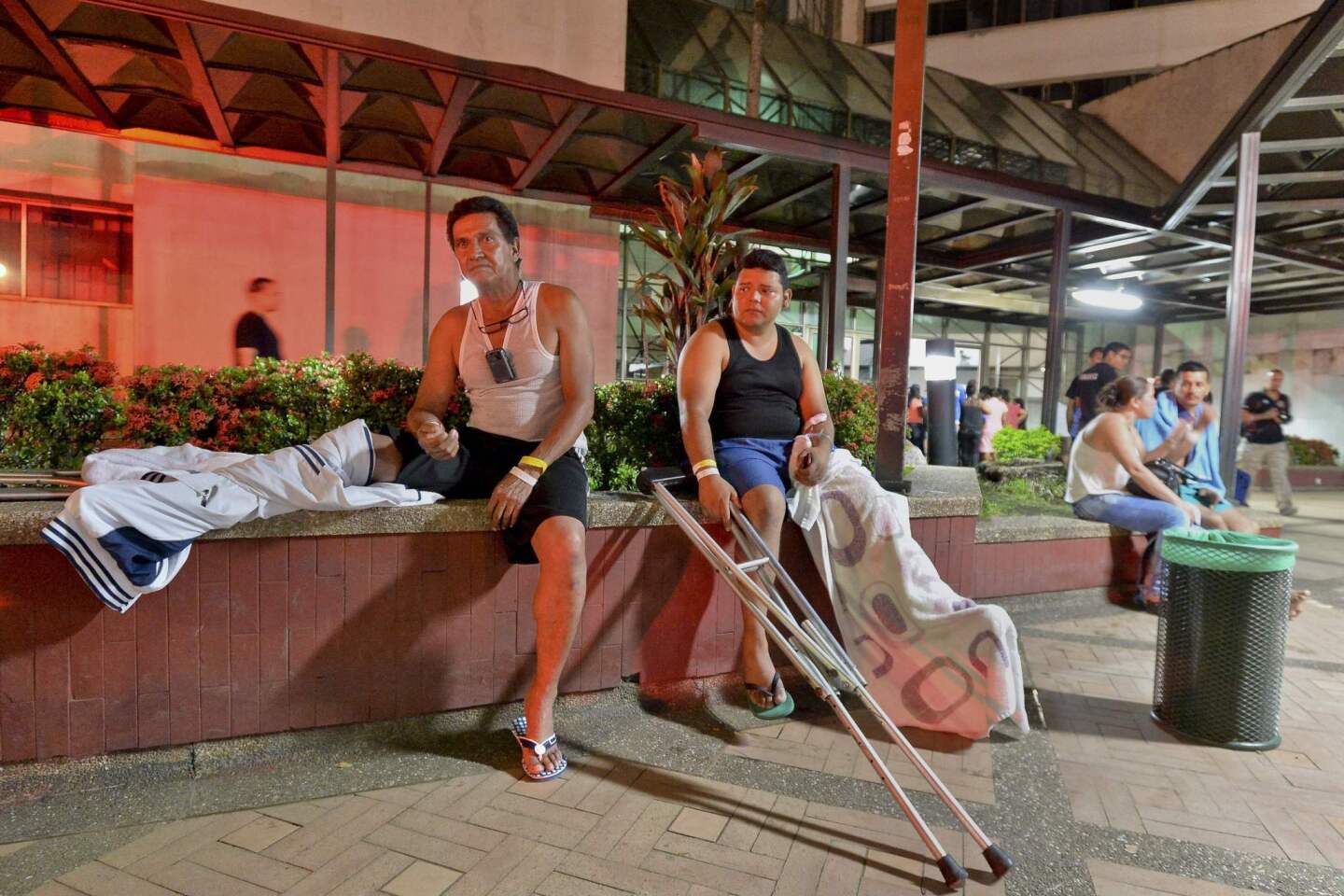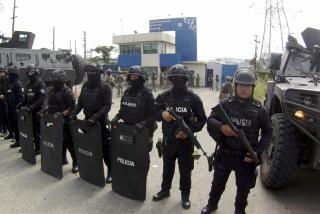Earthquake kills 233 in Ecuador; emergency workers rush in
- Share via
Reporting from pedernales, Ecuador — The strongest earthquake to hit Ecuador in decades flattened buildings and buckled highways along its Pacific coast. President Rafael Correa said at least 233 people had died and rescuers were struggling to reach survivors trapped in the rubble.
The magnitude 7.8 quake, the strongest to hit Ecuador since 1979, was centered on Ecuador’s sparsely populated fishing ports and tourist beaches, 105 miles (170 kilometers) northwest of Quito, the capital.
Correa reported the death toll on his official Twitter account while flying back from Rome to deal with the crisis. Officials earlier had reported more than 580 people injured.
Vice President Jorge Glas said there were deaths in the cities of Manta, Portoviejo and Guayaquil — all several hundred miles from the center of the quake, which struck shortly after nightfall Saturday.
In Pedernales, a town of 40,000 near the quake’s epicenter, dozens of scared residents slept in the streets while men equipped with little more than car headlights tried to rescue survivors who could be heard trapped under rubble.
“We’re trying to do the most we can, but there’s almost nothing we can do,” said Gabriel Alcivar, mayor of Pedernales.
Alcivar pleaded for authorities to send earth-moving machines and emergency rescue workers to help find people amid the rubble. He said looting had broken out amid the chaos but authorities were too busy trying to save lives to re-establish order.
“This wasn’t just a house that collapsed, it was an entire town,” he said.
Correa declared a national emergency and urged Ecuadoreans to stay strong while authorities handle the disaster.
“Everything can be rebuilt, but what can’t be rebuilt are human lives, and that’s the most painful,” he said in a telephone call to state TV before departing Rome straight for Manta.
Glas said 10,000 armed forces had been deployed to help. In addition, 4,600 national police were sent to the towns near the epicenter.
Officials said shelters had been set up and field hospitals were being deployed in Pedernales and Portoviejo. More than 3,000 packages of food and nearly 8,000 sleeping kits were being delivered. Electricity in Manabi province, the hardest hit, remained mostly down as authorities focused on finding survivors.
“Compatriots: Unity, strength and prayer,” Glas told a throng of residents gathered in the streets of Manta as he instructed them on how to look for survivors. “We need to be quiet so we can hear. We can’t use heavy machinery because it can be very tragic for those who are injured.”
Homes were reduced to rubble, while in Guayaquil a shopping center’s roof fell down and a collapsed highway overpass crushed a car. In Manta, the airport closed after the control tower collapsed, injuring an air traffic control worker and a security guard.
Alberto Reynas, 58, was fishing off the coast of Pedernales when giant waves violently rocked his boat.
“It felt the same on sea as it did on land,” he said.
But he was shaken again when he returned to land to find the facade of his two-story home had fallen off into the streets. He has been unable to communicate with members of his family and spent the night sleeping outdoors with neighbors, keeping a close watch against thieves.
“It’s pure sadness. Everything is destroyed,” he said.
Luis Quito said he spent the entire night delivering water to guests trapped under the rubble of a small, four-story Hotel Chimborazo owned by his father-in-law, who was missing and believed dead.
“We hear screaming all through night,” said Quito, wailing as he expressed outrage over the slow response of authorities. “There are humans trapped below the terrace. Babies. We need rescuers. But nobody has arrived so far.”
In the capital Quito, terrified people fled into the streets as the quake shook their buildings. It knocked out electricity in several neighborhoods and a few homes collapsed but after a few hours power was being restored.
Among those killed was the driver of a car crushed by an overpass that buckled in Guayaquil, the country’s most populous city. The city’s international airport was also briefly closed. Hydroelectric dams and oil pipelines in the OPEC-member nation were shut down as a precautionary measure, so there were no reports of damage to them.
Towns near the epicenter were evacuated in case of a tsunami, but several hours later authorities said it was safe for coastal residents to return to their homes.
Ecuador’s ally Venezuela pledged humanitarian aid while neighbor Colombia, where the quake was also felt, said it stands ready to help in any way possible. The government is drawing on $600 million in emergency funding from multilateral banks to rebuild, Correa said.
The U.S. Geological Survey originally put the quake at a magnitude of 7.4 then raised it to 7.8. It had a depth of 19 kilometers (12 miles). More than 135 aftershocks followed, one as strong as magnitude 5.6, and authorities urged residents to brace for even stronger ones in the coming hours and days.
David Rothery, a professor of geosciences at The Open University northeast of London, said the quake was about six times as strong as the most powerful of two deadly earthquakes across the Pacific, in the southernmost of Japan’s four main islands.
A magnitude 6.5 earthquake struck Thursday near Kumamoto, followed by a magnitude 7.0 earthquake just 28 hours later. The quakes have killed 41 people and injured about 1,500, flattened houses and triggered major landslides.
On Sunday, thousands of rescue workers searched a debris-strewn village in southern Japan for about a half-dozen missing people as U.S. military aircraft rushed to join the relief mission.

More to Read
Sign up for Essential California
The most important California stories and recommendations in your inbox every morning.
You may occasionally receive promotional content from the Los Angeles Times.
